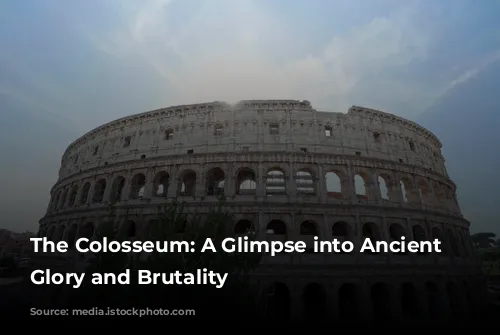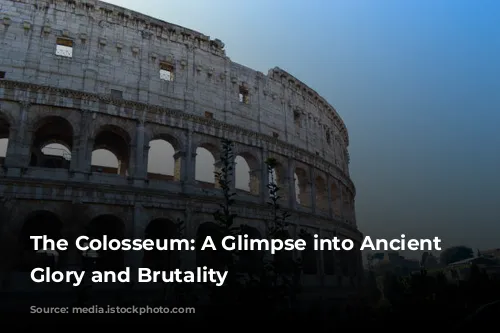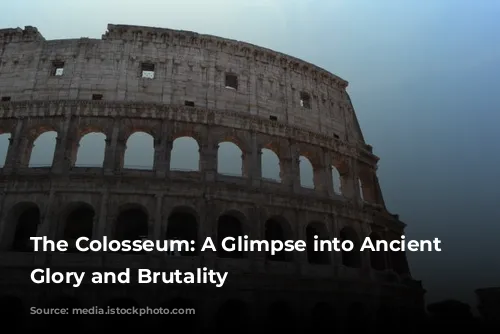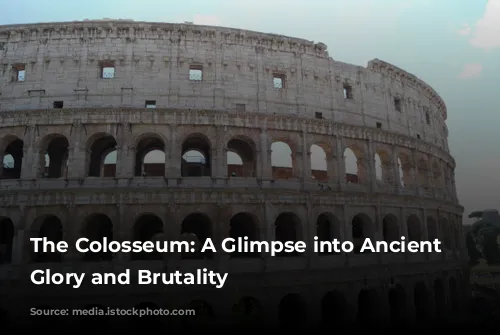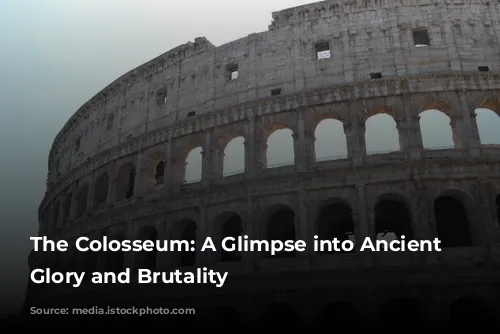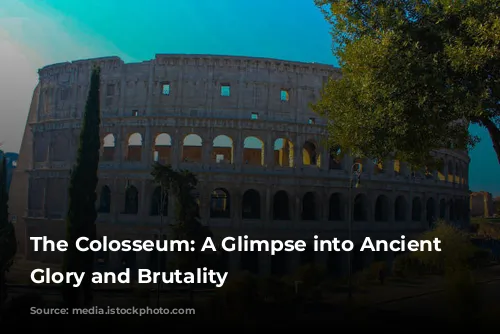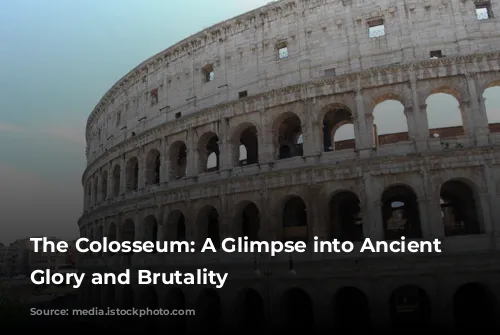The Colosseum, also known as the Flavian Amphitheatre, stands as a testament to the grandeur of the Roman Empire. This monumental structure, the largest amphitheatre in the Roman world, was commissioned by Emperor Vespasian of the Flavia family and inaugurated by his son Titus in 80 A.D. Its opening ceremony, an extravagant spectacle lasting one hundred days, featured gladiatorial combats, animal hunts, and even naumachias, naval battles staged in the arena flooded with water.
Why is it called the Colosseum?
The name appears for the first time in a medieval prophecy by Venerable Beda: “Rome will exist as long as the Colosseum does; when the Colosseum falls so will Rome; when Rome falls so will the world.” It is speculated that the name might have originated from the enormous statue of Emperor Nero, “the Colossus,” which stood near the amphitheatre.
A Masterpiece of Roman Architecture
Imagine the Colosseum in its pristine glory, completely clad in gleaming white travertine stone slabs. Its elliptical shape, designed to accommodate a larger audience, was supported by four tiers, the first three boasting eighty arches each. The upper tiers were adorned with magnificent statues. The remarkable speed of its construction, completed in less than ten years, is a testament to Roman architectural prowess.
The Romans were masters of the arch, a technique allowing efficient weight distribution for monumental structures. The Colosseum can be considered a series of aqueducts stacked on top of each other, showcasing the Romans’ mastery of this architectural marvel.
The Colosseum: A Witness to Time and Decay
What we see today is a skeleton of its former glory. Much of the outer wall, originally made of brick, has crumbled over centuries. The Colosseum was repurposed in the Middle Ages, its precious marble, lead, and iron scavenged for the construction of notable buildings like the Barberini Palace, Piazza Venezia, and even St. Peter’s Basilica. The holes in many columns are a stark reminder of this pillaging, revealing the iron used for nails within the marble blocks.
A Stage for Entertainment and Brutality
The Colosseum could accommodate up to seventy thousand spectators who were seated in tiers with a perfectly designed incline offering an unobstructed view of the arena. Roman citizens had access to the Colosseum for free, but seating was strictly divided according to social status, mirroring modern theater seating arrangements. Senators, Vestals, priests, and the emperor occupied the front rows, while the commoners sat at the top.
The “Velarium,” a massive linen awning, provided shade from the scorching sun. It was supported by a system of ropes, winches, and wooden poles, requiring a hundred sailors from the Imperial fleet to operate. They moved the awning in perfect unison, guided by the beat of a drum.
Beyond the Arena: A Glimpse into Ancient Games
Upon entering, the arena floor, once constructed from brick and wood, has vanished. In its place, we see underground cellars that housed equipment used to stage the spectacles. Lifts, hoists, and counterweights provided the special effects of the time, allowing animals and gladiators to burst into the arena through trapdoors, creating dramatic surprises.
The Colosseum was a platform for various events, from “Venationes,” hunts and fights between exotic animals, to “Silvae,” theatrical spectacles with recreated forest settings. Although popular belief suggests Christians were killed in the Colosseum, there is no historical evidence to support this.
The Gladiators: Heroes of the Arena
The gladiators, whose name derives from the short sword “Gladius,” were not always forced into combat. Many were prisoners of war offered the choice of slavery or fighting in the arena. Some were paupers seeking fame and wealth. They enjoyed a substantial income, often gaining immense popularity, especially among women who were known to pay lavishly for their attention.
Twelve types of gladiators, each with unique weapons and armor, battled in the arena. The “Retiarius,” armed with a net, a trident, and a knife, fought against those wielding a shield and a sickle. Others wore crested helmets, strong armor, and javelins. The matches were carefully orchestrated to create dramatic tension and excitement.
If a gladiator was wounded, he could beg for mercy by raising an arm. The audience would then implore the emperor to spare him or put him to death. The emperor’s thumbs-up signified mercy, while thumbs-down meant execution. Victorious gladiators were showered with golden palm leaves and money.
The Colosseum was not for the faint of heart. The audience reveled in cruel spectacles, similar to our modern-day fascination with “splatter” movies. The smell of blood and burnt flesh was inescapable, even with the attempt to mask it with incense and perfumes.
From Glory to Ruins and Redemption
After the fall of the Roman Empire, the Colosseum fell into disuse, becoming a haven for confraternities, hospitals, hermits, and even a cemetery. It was threatened with demolition by Pope Sixtus V for urban development but was ultimately declared a sacred monument dedicated to the Passion of Christ by Pope Benedict XIV. A cross was placed on a pedestal, symbolizing the suffering of Christian martyrs, and the Colosseum became a site of Christian pilgrimage.
The Colosseum, rescued from further destruction, has been restored and preserved. Today, it stands as a monument to the grandeur of the Roman Empire, reminding us of its extravagant spectacles, brutal games, and complex social fabric.
Charles Dickens’s words aptly describe the Colosseum’s timeless allure: “seeing the ghost of old Rome floating over the places its people walk in.”
